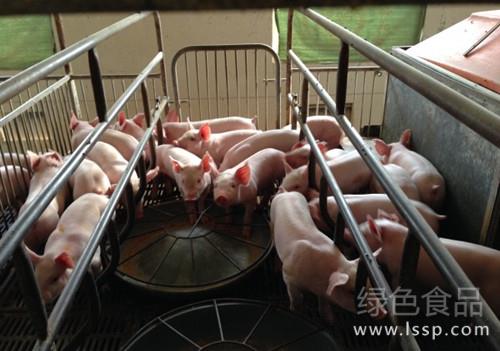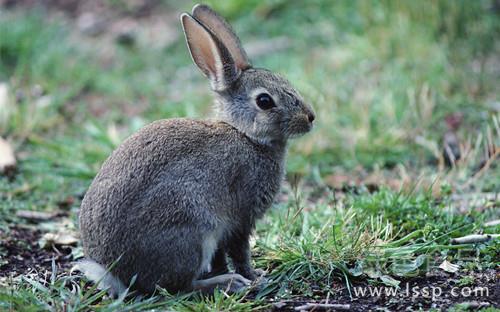Weaning stress of piglets need to learn the feeding method of weaned piglets

Piglets
First, the gradual transition of grouping. After the piglets were weaned, the piglets were not changed or mixed, and the sows were kept in the original circle after they left the ring. Do not mix several litters of piglets immediately after weaning, so as not to affect the growth of piglets due to the double stimulation of weaning and bites. In general, it is better for piglets to turn around or divide into circles after 3 months of age.
Second, the feed is in gradual transition. The piglets could not be changed immediately after weaning. The piglets were still fed with suckling feed within 2-3 weeks, and the feed was increased gradually after about 1 week, and then all weaned piglets were fed 2 weeks later.
Third, the feeding method is gradually transitional. In the early stage of weaning, they were still fed according to the feeding times and methods during the lactation period, ate less and ate more, and insisted on supplementary feeding at night to avoid stress, and gradually reduced the times after 2 weeks. If there is no restriction on food intake, piglets are prone to indigestion, resulting in dysentery, and each feed intake is flexibly controlled according to piglet intake, feces and dynamics.
The main results are as follows: 1. Feed according to the intake of piglets. When feeding the second meal, if there is still feed powder in the trough, there is no small pile of powder or granular material, it means that the last meal is appropriate; if there is no feed in the trough and there is saliva moist at the bottom of the trough, the feeding of the last meal is too small, it should be increased; if there are leftovers in the trough, the feeding should be reduced appropriately.
2. Feed according to the fecal state of piglets. The feces of piglets changed from coarse to fine and from yellow to brown within 3 days of weaning, which is normal. The observation time of feces is generally 12-15:00. The feces become soft, glossy, the color is positive, and the feeding quantity is suitable. If a small amount of feces in the circle is yellow and there are feed particles in it, it means that individual piglets eat too much, and this feeding should be about 20% less than last time. If the feces are mushy, light gray, and sporadic yellow, including undigested feed, indicating that the whole litter of piglets will be dysentery, should stop eating. The next meal is only half of what it was before the stop, and the second meal depends on the situation. If most of the feces in the circle become soft and black, the feeding amount can be restored to 80% of the normal amount, and then return to the normal dosage. Such as fecal paste, green, fecal mixed intestinal mucosa, etc., to stop eating two meals, the third meal only sprinkled a small amount of feed at the bottom of the trough, gradually increase the amount of feed, after three days, gradually return to constant.
3. Feeding according to the piglets' activities: before feeding, the piglets hear a sound swarm to the trough and scream constantly, indicating that they are hungry and can be fed more; for about ten minutes, the feed in the trough is robbed, and the piglets do not return to the nest, crowded and look around at the edge of the trough, indicating that they are insufficient and can be thrown more; sometimes the piglets do not arrive at the edge of the trough before feeding, and the cry is small and weak, not panic, indicating that they are not too hungry and can throw in less food.
4. After weaning, in the feed restriction stage, the feed type should be consistent with the lactation period, and adequate clean drinking water should be provided. The whole feed restriction period should be 7-10 days, and then it should be fed four times a day, and do a good job of immunization, regular disinfection in the house, keep dry and hygienic, and have a good living environment.
- Prev

Refuse to eat abdominal distension, severe diarrhea, dehydration, beware of rabbit epidemic enteritis in winter
Refuse to eat abdominal distension, severe diarrhea, dehydration, beware of rabbit epidemic enteritis in winter
- Next

Attach importance to the rational drinking water of pigs
First, the harm of insufficient drinking water of pigs is widespread in pig feeding, which only pays attention to feeding while neglecting drinking water, but they do not realize that drinking water and feeding are as important as feeding, even more important than feeding. The main harm of insufficient drinking water is: 1. Insufficient drinking water will lead to an increase in the incidence of intestinal tract in pigs. Farmers raise pigs, most of them use the traditional one-time feeding method of water supply, no matter what the weather conditions, regardless of the type of feed, do not give drinking water. Pigs often drink dirty water after they are thirsty due to lack of drinking water, especially in hot summer.
Related
- On the eggshell is a badge full of pride. British Poultry Egg Market and Consumer observation
- British study: 72% of Britons are willing to buy native eggs raised by insects
- Guidelines for friendly egg production revised the increase of space in chicken sheds can not be forced to change feathers and lay eggs.
- Risk of delay in customs clearance Australia suspends lobster exports to China
- Pig semen-the Vector of virus Transmission (4)
- Pig semen-the Vector of virus Transmission (3)
- Five common causes of difficult control of classical swine fever in clinic and their countermeasures
- Foot-and-mouth disease is the most effective way to prevent it!
- PED is the number one killer of piglets and has to be guarded against in autumn and winter.
- What is "yellow fat pig"? Have you ever heard the pig collector talk about "yellow fat pig"?

